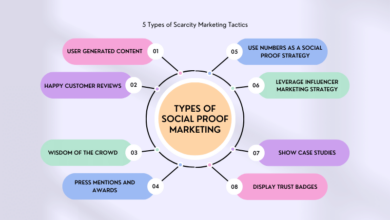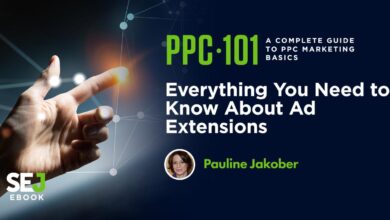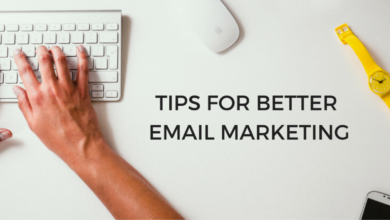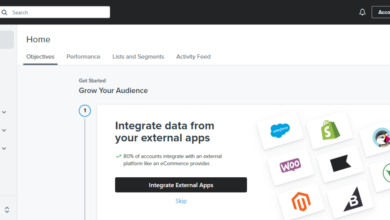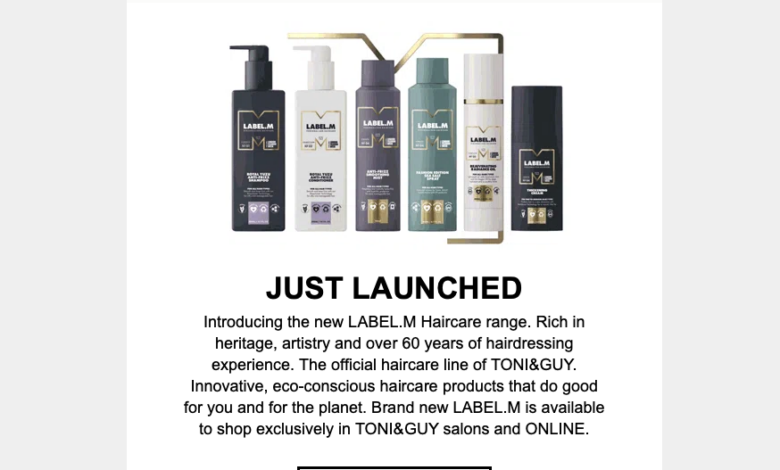
How to Write a Promotional Email A Comprehensive Guide
How to write a promotional email is a critical skill for any marketer. This guide dives deep into crafting compelling emails that resonate with your audience, driving conversions and boosting your bottom line. From crafting irresistible subject lines to optimizing for mobile, we’ll cover every aspect of creating a successful promotional email campaign.
We’ll explore various strategies, including personalization techniques, A/B testing methods, and legal considerations. Learning how to write a promotional email that gets results requires understanding your audience and tailoring your message accordingly. This comprehensive guide will provide you with the tools and knowledge you need to achieve this.
Email Subject Lines
Crafting compelling subject lines is crucial for boosting open rates and driving engagement in your promotional emails. A well-written subject line acts as the first impression, enticing recipients to open the email and learn more about your offer. A poorly written one, however, can lead to your message being lost in the inbox clutter.Understanding the psychology behind subject lines and using them effectively is key to achieving higher open rates.
This involves choosing the right tone, style, and language to pique recipient interest. Different strategies are effective for different types of campaigns, so tailoring your approach is essential.
Compelling Subject Line Examples
Effective subject lines are often concise, clear, and create a sense of urgency or curiosity. They should immediately communicate the value proposition of the email.
- Announcing a Sale: “Flash Sale! 50% Off All Products!” or “Limited Time Offer: Up to 70% Off Your Next Order!”
- Promoting a New Product: “Introducing the All-New [Product Name]!” or “Experience the Future with the [Product Name]
-Available Now!” - Highlighting a Special Offer: “Exclusive Discount Just for You!” or “Don’t Miss Out on This Limited-Time Offer!”
- Addressing a Specific Need: “Solve Your [Problem] with [Product/Service]” or “Boost Your Productivity with Our New Tools”
Subject Line Styles and Effectiveness
Different styles of subject lines can evoke various responses from recipients. The choice depends on the specific campaign and target audience.
| Subject Line Style | Example | Effectiveness |
|---|---|---|
| Direct | “20% Off Your Next Purchase” | High effectiveness for clear and concise offers. |
| Intriguing | “Unlock a Secret Discount!” | Good for creating curiosity and prompting recipients to open. |
| Question-Based | “Ready to Save Money?” | Can be effective but might need careful consideration to avoid sounding too generic. |
Note that the effectiveness of a subject line style can vary depending on the specific context and target audience. A/B testing is crucial to determine which style resonates best.
Designing Urgency and Value Propositions
Creating a sense of urgency and highlighting the value proposition are crucial for effective subject lines.
- A structure for a subject line that incorporates urgency and value propositions could be “Limited-Time Offer: [Discount]% Off [Product Name]”.
- This structure clearly communicates the value (discount) and the urgency (limited time).
Testing Different Subject Lines
Testing different subject lines is essential for optimizing open rates. A/B testing involves sending variations of the same email to different segments of your audience.
- Track the open rates for each variation to determine which subject lines perform best.
- Consider A/B testing different lengths, tones, and styles to see what resonates most with your audience.
A/B testing allows you to optimize subject lines and improve email marketing campaign performance by gaining a better understanding of your audience.
Email Body Structure
Crafting a compelling promotional email hinges on a well-structured layout. A clear and concise design not only grabs attention but also guides the recipient through the core message, ultimately increasing conversion rates. A carefully organized email ensures your offer isn’t lost in the inbox clutter.Effective email design demands a strategic approach to content organization. This involves thoughtfully arranging key sections to create a logical flow, highlighting your value proposition, and ultimately encouraging desired actions.
The optimal structure for a promotional email should incorporate elements that resonate with the recipient, while staying concise and impactful.
Optimal Section Structure
Promotional emails benefit from a structured approach. Different sections serve distinct purposes. The table below Artikels the importance of each section and provides an estimate of its ideal length.
| Section | Importance | Approximate Length (words) |
|---|---|---|
| Introduction | Grabs attention, establishes context, and sets the tone. | 20-40 |
| Value Proposition | Clearly articulates the benefit for the recipient. | 50-100 |
| Details/Features | Provides supporting information about the offer. | 50-150 |
| Call to Action | Explicitly tells the recipient what to do next. | 10-20 |
Incorporating Visuals
Visual elements significantly enhance email engagement. Images and videos can break up text, convey information more effectively, and boost visual appeal.Strategic placement of high-quality visuals is crucial. Use images relevant to the promotion, and ensure they are optimized for email display. Avoid overly large images that might slow down loading times. Consider incorporating a short, engaging video showcasing the product or service.
Maintaining a Concise and Engaging Tone
Maintaining a concise and engaging tone throughout the email is paramount. Avoid overly technical jargon or lengthy descriptions. Write in a clear, conversational style. Use strong verbs and active voice to create impact. Use short paragraphs to improve readability and maintain engagement.
Example of Visual Integration
Imagine an email promoting a new fitness app. A high-quality image of a person actively exercising, set against a backdrop of a vibrant park, can convey energy and motivation. A short video clip showcasing the app’s intuitive interface and features can be incorporated for a more interactive experience. This integration keeps the email visually engaging without distracting from the core message.
Call to Action (CTA) Strategies
Crafting compelling calls to action (CTAs) is crucial for driving conversions in promotional emails. A well-designed CTA encourages recipients to take the desired action, whether it’s making a purchase, signing up for a newsletter, or downloading a resource. Effective CTAs stand out from the surrounding email text, using clear language and prominent placement.Understanding your promotional goals is paramount when designing a CTA.
Different goals necessitate different CTA approaches. For instance, a CTA for a product sale will differ from one encouraging newsletter sign-ups. A successful CTA is more than just a button; it’s a strategic component of the entire email campaign.
CTA Design for Different Promotional Goals
Understanding the specific promotional goal helps determine the optimal CTA design. For instance, a goal focused on product purchases will need a different approach compared to a goal of collecting email addresses. A clear understanding of the objective is essential for developing a successful call to action.
- Product Purchase: Emphasize urgency and exclusivity. Use strong verbs like “Buy Now,” “Shop Now,” or “Claim Your Discount.” Highlight the benefits of immediate action. For example, “Limited-time offer: 20% off your first order!”
- Newsletter Sign-up: Focus on value and community. Use phrases like “Join Our Newsletter,” “Get Updates,” or “Stay Informed.” Highlight the exclusive content subscribers receive.
- Downloadable Resources: Use action-oriented language like “Download Now,” “Get Your Free Guide,” or “Access the Report.” Emphasize the value proposition of the resource.
- Event Registration: Use language that conveys excitement and a sense of community. Phrases like “Register Now,” “Secure Your Spot,” or “RSVP Today” are appropriate.
Making CTAs Stand Out
A well-designed CTA should visually differentiate itself from the surrounding email content. This can be achieved through color, size, and shape. Consider the color palette of your brand to ensure consistency.
Crafting a compelling promotional email involves more than just a catchy subject line. Think about your audience and what truly excites them. For example, check out how Grace Windheim, a product marketing expert at Kapwing, expertly crafts marketing messages for the platform grace windheim product marketing kapwing. Understanding the nuances of their strategies can help you build your own impactful emails that resonate with your target audience.
- Color Contrast: Use a color that stands out against the email background. High contrast between the CTA button and the email body will increase visibility. For instance, a dark-blue button on a light-gray background is a good contrast.
- Font Size and Weight: Use a font size and weight that’s larger and bolder than the surrounding text. This will draw the reader’s eye to the CTA.
- Button Shape and Style: Experiment with different button shapes and styles. Round buttons can look modern and sleek. Rectangular buttons can look clean and professional. Consider using a call-out box around the CTA to further highlight it.
Effective CTA Wording and Placement
The wording of the CTA should be clear, concise, and action-oriented. Placement should be strategic, drawing the reader’s eye naturally.
- Examples of Effective Wording: “Buy Now,” “Get Started,” “Sign Up Free,” “Learn More.” Avoid passive phrasing, like “Learn more about our products.” Active verbs will lead to higher engagement.
- Placement Strategies: Place the CTA button near the end of the email, where it’s visible but doesn’t interrupt the flow of the content. Also, strategically place CTAs within the body of the email, near the relevant content.
CTA Button Styles and Click-Through Rates
Different button styles can influence click-through rates. Experimentation is key to finding the optimal design for your audience.
| Button Style | Description | Potential Impact on CTR |
|---|---|---|
| Rounded Button | Modern and sleek appearance | Can increase engagement, especially with younger audiences. |
| Rectangular Button | Clean and professional look | Generally effective for a wider range of audiences. |
| Call-out Box | Highlights the CTA within a box. | Can significantly increase visibility and engagement. |
| Hover Effects | Button changes appearance on hover | Can create visual interest and encourage clicks. |
Personalization Techniques
Crafting promotional emails that resonate with individual recipients is crucial for boosting engagement and conversions. Generic messages often fall flat, while personalized emails feel tailored and valued. This section delves into techniques for personalizing your promotional emails, ensuring they connect with the specific needs and interests of each subscriber.Personalization isn’t just about adding a name; it’s about understanding your audience on a deeper level and tailoring the message to their unique circumstances.
This involves segmenting your audience, utilizing dynamic content, and strategically crafting personalized subject lines and email content.
Leveraging Recipient Data
Understanding your audience is paramount for creating personalized email campaigns. Analyzing recipient data, such as purchase history, demographics, and engagement levels, provides valuable insights for tailoring messages. This data empowers you to segment your audience effectively and craft targeted promotions.
- Purchase History: Analyzing past purchases reveals preferences and allows for targeted recommendations. For instance, if a customer has consistently purchased hiking gear, you could send them promotions on related products, like hiking boots or backpacks. This demonstrates a deep understanding of their interests and needs.
- Demographics: Demographic data, including age, location, and interests, helps tailor messages to specific groups. For example, a company targeting young professionals might use language and imagery appealing to that demographic, whereas a company targeting retirees might emphasize different benefits and features.
- Engagement Levels: Monitoring engagement metrics, such as open rates and click-through rates, helps identify subscribers who are more receptive to certain types of promotions. By targeting these individuals with personalized offers, you can maximize engagement and conversions.
Audience Segmentation for Targeted Campaigns
Segmenting your audience is essential for delivering highly personalized messages. This involves dividing your subscribers into distinct groups based on shared characteristics, behaviors, or interests.
- Customer Lifetime Value (CLTV): Segmenting by CLTV allows for targeted promotions to high-value customers. High-value customers may receive exclusive discounts, early access to new products, or personalized customer service.
- Product Preferences: Categorizing customers based on their past purchases or browsing history enables targeted product recommendations. For example, a customer who has consistently purchased organic produce might receive promotions for organic meal kits.
- Purchase Frequency: Segmenting by purchase frequency helps in creating tailored messages that cater to different customer needs. Frequent buyers might receive exclusive loyalty programs or early access to sales, while infrequent buyers might be encouraged to make a purchase with promotional offers.
Dynamic Content for Tailored Messages
Dynamic content allows you to tailor email content in real-time, creating a highly personalized experience for each recipient. This involves using variables to insert relevant information directly into the email body.
- Personalized Recommendations: Dynamic content enables the display of personalized product recommendations based on individual purchase history. Instead of a generic “new arrivals” section, a customer might see recommendations for items related to their past purchases.
- Targeted Offers: Dynamic content can be used to present personalized offers based on the recipient’s segment or past behavior. A customer who has expressed interest in a particular product might receive a targeted discount on that product.
- Customized Greetings: Using dynamic content to include the recipient’s name in the email greeting creates a more personal and engaging experience. Instead of “Dear Customer,” the message could read “Dear John,” fostering a stronger connection.
Crafting Personalized Subject Lines and Email Content
Personalization extends beyond the email body; it also involves crafting tailored subject lines and content.
- Personalized Subject Lines: Subject lines should reflect the specific interest of the recipient. Using the recipient’s name or mentioning a specific product they’ve shown interest in can significantly improve open rates.
- Tailored Content: The email content itself should address the specific needs and interests of the recipient. Personalizing the language, tone, and imagery can make the message feel more relevant and engaging.
Email Design and Layout: How To Write A Promotional Email
Crafting an email that’s not only effective but also visually appealing is crucial for capturing attention and driving conversions. A well-designed email fosters a positive user experience, increasing the likelihood of recipients engaging with your message and taking the desired action. A responsive design is paramount, ensuring your email looks great on all devices.A visually appealing email isn’t just about aesthetics; it’s about clarity and usability.
A clear and intuitive layout guides the recipient through your message, making it easy to absorb key information and take the desired action. Maintaining a consistent brand identity throughout your email design strengthens your brand recognition and builds trust with your audience.
Responsive Email Template
A responsive email template is crucial for optimal viewing across various devices. This ensures that your message is presented correctly on desktops, tablets, and smartphones. The following HTML table structure creates a mobile-friendly email layout:
|
Header Your brand logo |
|---|
|
Body Crafting a compelling promotional email is key, but understanding how to structure your entire paid media strategy is just as important. Think about your email as the final touch in a well-orchestrated campaign. For example, if you’re running a pilot campaign, consider the 8 steps to structure paid media pilot campaign, like defining your target audience and setting clear goals. This helps you create emails that resonate with the right people and achieve your desired results. Ultimately, a well-structured paid media campaign, like the one detailed in 8 steps to structure paid media pilot campaign , leads to more effective promotional emails. Your message content here Use clear and concise language Include images and/or videos (if appropriate) |
|
Footer Your contact information Social media links |
Visual Appeal and Readability
To create a visually appealing email that’s easy to read, maintain a clean and uncluttered layout. Use ample whitespace to separate content, preventing an overwhelming visual experience. Break up large blocks of text with images, videos, or bullet points.
Branding Consistency
Consistent branding throughout the email strengthens brand recognition and fosters trust. Using your brand’s logo, color palette, and typography in a consistent manner across all email communications reinforces your brand identity. This reinforces your message and builds familiarity with your brand.
Color, Font, and Whitespace Best Practices
Choosing appropriate colors, fonts, and whitespace is essential for a visually appealing and readable email. A color palette that aligns with your brand guidelines and complements the overall design is crucial. Use fonts that are easy to read, especially in smaller sizes. Avoid using too many fonts or colors. Employ sufficient whitespace to prevent visual clutter.
Sufficient spacing between elements creates a visually balanced and uncluttered design, enhancing readability.
A/B Testing Strategies
A/B testing is crucial for optimizing promotional email campaigns. By systematically comparing different versions of your emails, you can identify what resonates best with your audience and significantly improve engagement metrics. This iterative process allows you to refine your messaging and achieve higher open rates, click-through rates, and ultimately, conversions. It’s not a one-time activity but a continuous cycle of learning and improvement.Understanding your audience’s preferences and behaviors is paramount to crafting effective email campaigns.
A/B testing provides valuable insights into what elements of your emails are most impactful. By systematically experimenting with different subject lines, body copy, and call-to-actions, you can pinpoint the strategies that yield the highest engagement.
Creating A/B Test Variations
A successful A/B test hinges on meticulously planned variations. Start by identifying specific elements to test, such as subject lines, email body content, call-to-actions, or even email design elements. For example, you could test different subject line styles, headlines, or even the use of emojis. When making variations, maintain consistency in other aspects of the email to isolate the impact of the specific element being tested.
The goal is to measure the direct effect of the variation on key metrics.
A/B Testing Email Subject Lines
Testing different subject lines is a critical aspect of email marketing optimization. Subject lines directly influence whether recipients open your emails. A/B testing allows you to determine which subject lines are most enticing and effective at driving opens. For instance, a test might compare a straightforward subject line (“New Product Launch!”) against a more intriguing subject line (“Unlock Exclusive Savings Today!”).
Crafting a killer promotional email is all about grabbing attention and driving conversions. A key part of that is understanding your audience and tailoring your message. You need to know what motivates them and how to speak to their needs directly. For optimizing your email campaigns, checking out a Klaviyo review like this one can provide valuable insights into features and strategies for crafting effective email marketing campaigns.
Ultimately, remember to A/B test different subject lines and email content to see what resonates best with your audience and optimize for conversions.
- Example 1: Subject line A – “Limited-Time Offer on New Sneakers” vs. Subject line B – “Exclusive Sneak Peek: New Sneakers Dropping Soon.”
- Example 2: Subject line A – “Don’t Miss This!” vs. Subject line B – “Special Discount for You.”
A/B Testing Email Body Copy
The body copy of your email significantly influences engagement and conversion rates. A/B testing allows you to determine the most effective tone, style, and persuasive language. Variations could include different levels of formality, use of testimonials, or even the length of the copy. For example, you could test a concise, benefit-driven message against a more detailed, feature-focused approach.
- Example: Body copy A – focuses on the product’s benefits and includes a compelling image, vs. Body copy B – details product specifications and features with a table comparison.
A/B Testing Call-to-Actions (CTAs)
Call-to-actions (CTAs) are the gateway to conversions. A/B testing different CTAs can dramatically improve click-through rates. Testing different colors, wording, and placement can significantly impact the number of recipients who click on your CTA. For instance, a test could compare a button with the words “Shop Now!” to a button with the words “Claim Your Discount.”
- Example: CTA A – “Get the Deal Now!” with a bright orange button, vs. CTA B – “Learn More” with a blue button.
Analyzing A/B Test Results, How to write a promotional email
Analyzing A/B test results is essential for determining which variations perform best. Focus on key metrics like open rates, click-through rates, conversion rates, and bounce rates. Tools provided by email marketing platforms often provide detailed reports to aid this analysis. Using these metrics, you can identify the variations that yield the best results and optimize your email campaigns accordingly.
- Example: If subject line B has a significantly higher open rate than subject line A, then subject line B is more effective at driving engagement.
Using Analytics to Understand Email Engagement
Leveraging analytics is vital to understanding the impact of different email elements on engagement. By tracking metrics like open rates, click-through rates, conversion rates, and bounce rates, you can identify which variations resonate most strongly with your audience. A/B testing provides valuable data to understand what elements of your emails are most effective in driving desired outcomes. This data helps you to fine-tune your strategies to improve email performance continuously.
Email Content Examples
Crafting compelling email content is crucial for driving engagement and conversions. A well-written promotional email can effectively communicate the value proposition of a product or service, highlighting its benefits and enticing recipients to take action. This section delves into practical examples and strategies for creating impactful email copy.
Promotional Email Examples
Different products and services necessitate tailored approaches. Consider the following examples:
- E-commerce Product Launch: A new clothing line might send an email showcasing the collection with high-quality images and short, engaging descriptions of each item. The email could highlight unique features, like sustainable materials or innovative designs, and include a limited-time discount code to incentivize immediate purchases.
- Service Announcement: A marketing agency might announce a new service, like social media management, by detailing the benefits for clients. The email could emphasize increased engagement, higher conversion rates, and improved brand visibility. A compelling case study or testimonial from a satisfied client could further bolster the message’s impact.
- Lead Nurturing: A SaaS company might send a series of emails to potential customers, gradually introducing their product’s functionalities and addressing common concerns. Each email could focus on a specific benefit, like streamlined workflows or improved data analysis, and link to helpful resources.
Compelling Copy Strategies
Crafting compelling copy involves understanding your audience and tailoring your message accordingly. Focus on benefits, not just features. Here’s how to achieve this:
- Benefit-Driven Language: Instead of stating a feature like “high-resolution images,” emphasize the benefit, such as “impressive visuals that capture attention.” Translate technical specifications into relatable advantages for the reader. This approach resonates better with the target audience.
- Storytelling: Weaving a story around your product or service can connect with recipients on an emotional level. Share anecdotes, testimonials, or case studies to illustrate how your offering solves problems or enhances lives.
- Call to Action (CTA) Alignment: Ensure the call to action aligns with the content of the email. If the email focuses on a new product launch, the CTA should direct users to the product page. A clear and concise CTA with strong verbs (e.g., “Shop Now,” “Learn More”) is essential.
Benefit-Oriented Email Copy Examples
Focusing on benefits instead of features creates a more persuasive email. Consider these examples:
- Instead of: “Our software has a user-friendly interface with customizable dashboards.”
Try: “Effortlessly manage your data with our intuitive dashboards, designed for easy navigation and personalized insights.” - Instead of: “This phone boasts a 64MP camera.”
Try: “Capture stunning, crystal-clear photos and videos with our advanced camera system.”
Ensuring Readability
An easy-to-read email enhances engagement and comprehension. Consider these strategies:
- Short Paragraphs: Break down lengthy paragraphs into shorter, more digestible chunks. This improves readability and encourages scanning.
- Bullet Points and Lists: Use bullet points and numbered lists to present information concisely and visually appealingly. This improves scannability and comprehension.
- Clear and Concise Language: Avoid jargon and technical terms that might confuse recipients. Use simple, direct language that resonates with your target audience.
Legal and Compliance Considerations
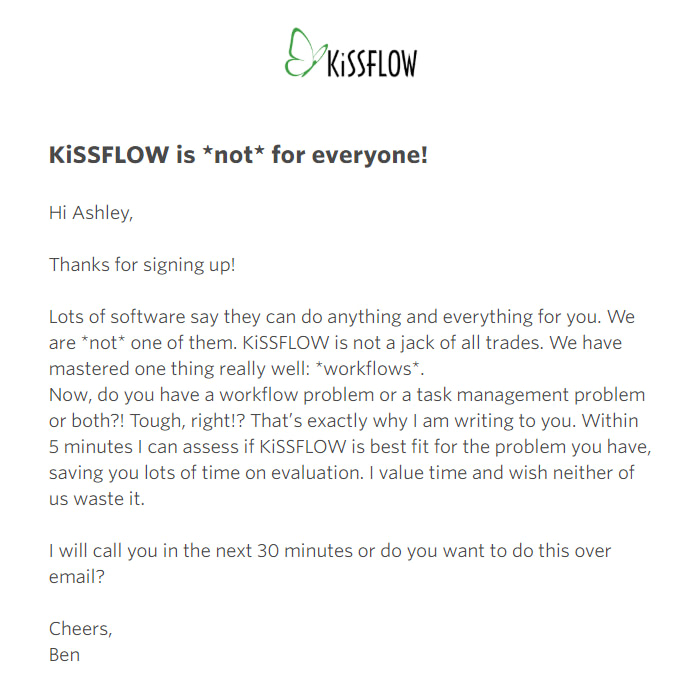
Promotional emails, while a powerful marketing tool, are subject to a range of legal and regulatory frameworks. Understanding and adhering to these rules is crucial to avoid penalties and maintain a positive brand image. Non-compliance can lead to costly fines and damage your reputation.Navigating the legal landscape of email marketing requires meticulous attention to detail. From ensuring clear unsubscribe options to adhering to data privacy regulations, the rules are multifaceted and demand careful consideration.
This section delves into the critical legal and compliance aspects of email marketing campaigns.
Unsubscribe Options
Clear and readily available unsubscribe mechanisms are vital for complying with email marketing regulations. Users must have a straightforward and easily accessible way to opt-out of receiving future emails. This is not just a best practice; it’s often a legal requirement. Failure to provide an obvious and functional unsubscribe link can result in legal action and damage your brand image.
- Provide a prominent unsubscribe link in every email.
- Ensure the unsubscribe process is effortless and confirms removal.
- Maintain an accurate subscriber list and promptly remove unsubscribing users.
Disclosure Requirements
Transparency in email marketing is paramount. Disclosing your identity, the purpose of the email, and any relevant information is critical for maintaining user trust and avoiding issues. It’s essential to be clear about how you collect and use user data, as Artikeld in privacy policies.
- Clearly identify your company and the email’s purpose.
- Include a clear statement about your privacy policy and data collection practices.
- Disclose the method of user data collection, such as sign-ups or form submissions.
- Be upfront about the use of email marketing data for personalized content and targeted advertising.
Compliance with Email Marketing Regulations
Adherence to regulations like CAN-SPAM (in the US) and GDPR (in Europe) is critical for avoiding legal complications. These regulations establish guidelines for email marketing practices, emphasizing transparency, user consent, and data protection.
- Understand and comply with relevant local and international regulations regarding email marketing.
- Obtain explicit consent before collecting and using user data for marketing purposes.
- Maintain accurate and up-to-date records of your email subscribers.
- Develop a clear and concise privacy policy.
Best Practices to Avoid Legal Issues
Implementing robust email marketing practices helps mitigate legal risks. A well-structured and compliant approach minimizes potential issues and builds trust with subscribers.
- Use double opt-in procedures to verify subscriber consent.
- Include a physical address for return mail.
- Clearly identify your company and the purpose of the email.
- Ensure emails are free of spam triggers.
- Keep your email marketing strategies aligned with data privacy regulations.
Examples of Effective Compliance Practices
Effective email marketing compliance involves proactive measures to maintain compliance and build trust.
- Company A employs a clear, concise, and easily accessible unsubscribe link in all emails.
- Company B meticulously follows double opt-in procedures to validate user consent and maintains an up-to-date subscriber list.
- Company C provides a comprehensive privacy policy outlining data collection and usage practices, and prominently displays it on the website and within email communications.
Mobile Optimization
Promotional emails need to adapt to the diverse ways people consume information. The mobile experience is now paramount, as a large portion of email opens and engagement occurs on smartphones and tablets. Failing to optimize for mobile devices can significantly reduce the effectiveness of your campaigns, resulting in lost opportunities and a poor user experience.Email clients on mobile devices often have different rendering capabilities and screen sizes than desktop clients.
Consequently, emails that look great on a desktop might appear cramped, unreadable, or even broken on a mobile phone. Effective mobile optimization ensures your emails are easily readable and navigable on any device.
Responsive Email Design with HTML Tables
Email clients on mobile devices often render HTML differently than desktop clients. Using HTML tables for layout allows you to create a responsive design that adapts to various screen sizes. This approach helps maintain readability and functionality across different mobile devices. It’s crucial to understand how different mobile email clients interpret your HTML code.
| Desktop View | Mobile View |
|---|---|
|
A wide, detailed layout with multiple columns. |
A single-column layout that adjusts to the width of the mobile screen. |
|
Large images and complex designs. |
Optimized images and simplified designs to avoid slow loading. |
Importance of Mobile Optimization
A significant portion of email opens and engagement occurs on smartphones and tablets. Mobile optimization is crucial for delivering a positive user experience, driving engagement, and achieving marketing goals. Neglecting mobile optimization can lead to lower click-through rates, decreased conversion rates, and ultimately, a diminished return on investment.
Desktop vs. Mobile Email Experiences
Desktop and mobile email experiences differ significantly. Desktop emails often have more space for detailed content and intricate layouts. Mobile emails, on the other hand, are typically limited by screen size and need to be more concise and easily digestible. A key difference is the need for quicker loading times on mobile devices.
- Desktop users might have more time to explore detailed content.
- Mobile users are often looking for quick access to information and need to be able to scan content.
- Mobile emails need to load quickly and efficiently to avoid losing user interest.
Examples of Successful Mobile Email Campaigns
Successful mobile email campaigns leverage responsive design and prioritize user experience. They often feature concise, scannable content and visually appealing layouts that adapt to the mobile screen. These campaigns often highlight key product information and encourage immediate action. Examples can include using a single column layout, optimized image sizes, and easy-to-use buttons.
- Companies like [Company Name] have successfully implemented mobile-first strategies for their promotional emails, leading to higher engagement rates.
- A clear call to action is crucial for mobile email campaigns. This allows users to easily interact with the content.
Closing Notes
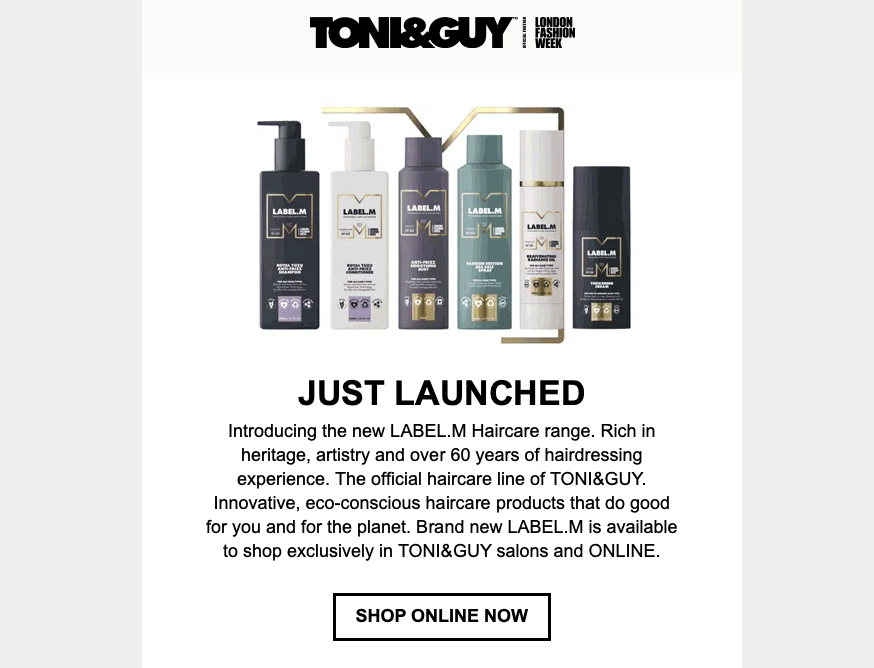
In conclusion, crafting effective promotional emails is a multifaceted process. From compelling subject lines to persuasive calls to action, each element plays a vital role in driving engagement and achieving your marketing goals. Remember to focus on personalization, A/B testing, and mobile optimization to maximize your email marketing results. This guide provides a solid foundation, and by applying these principles, you’ll be well-equipped to create successful promotional email campaigns that yield impressive results.
